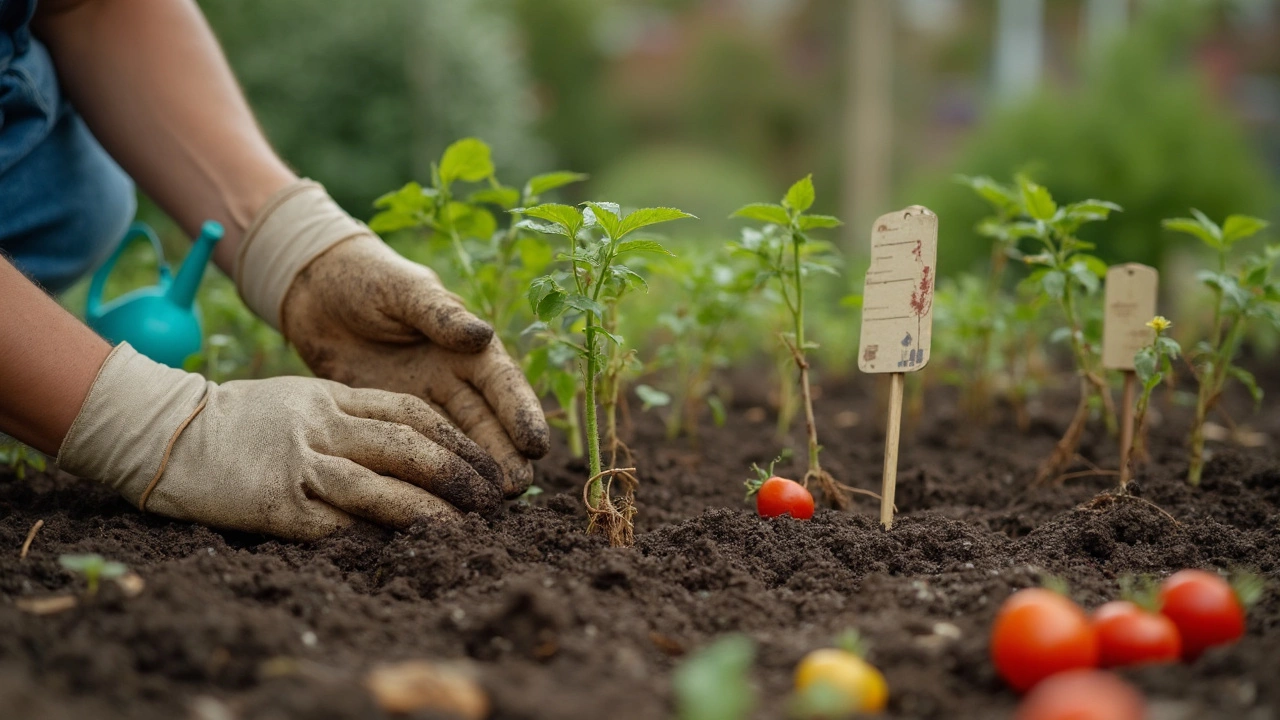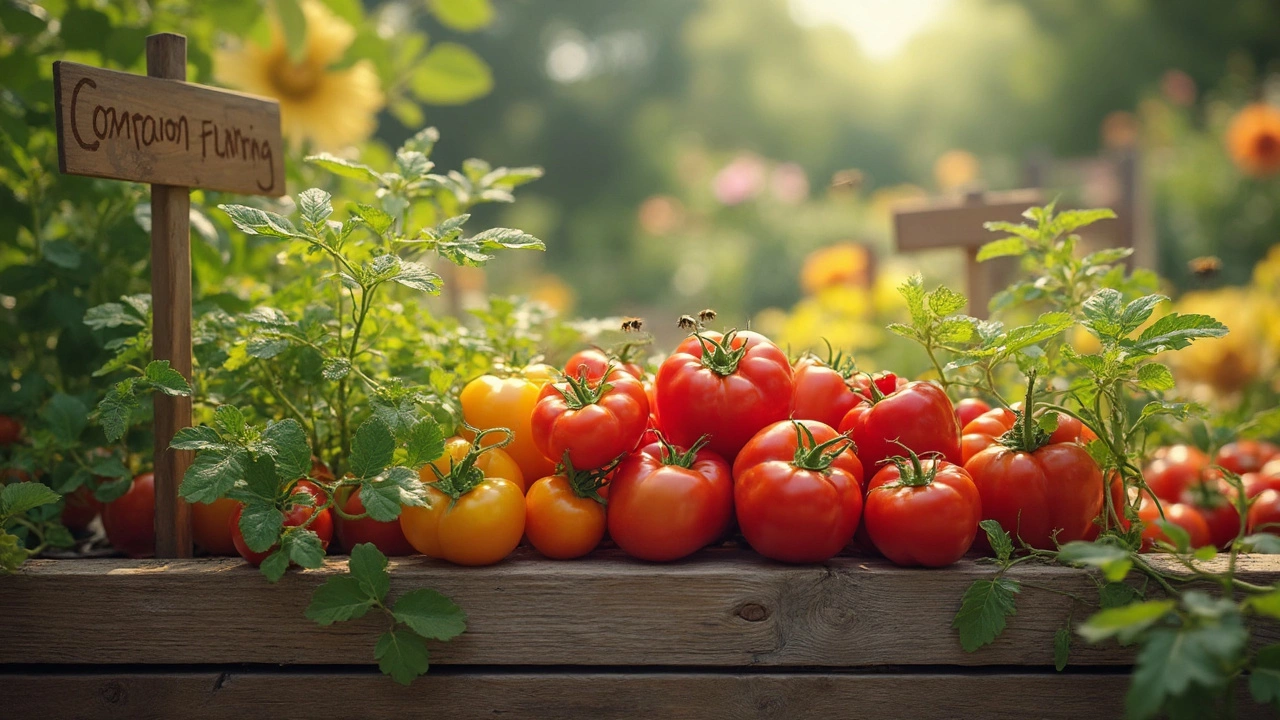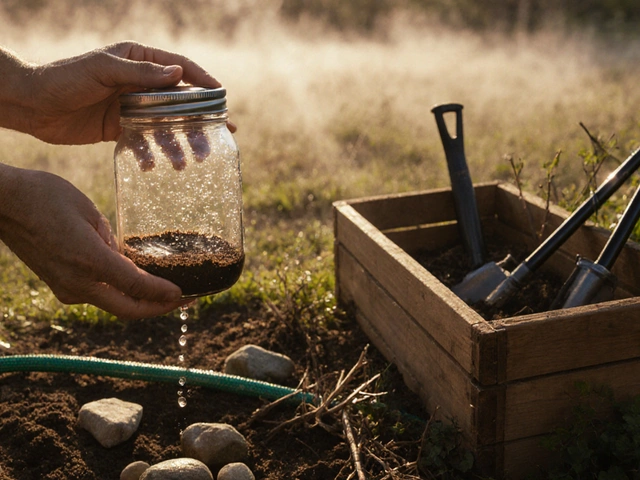I bet you’ve pictured a sunny garden, loaded with juicy tomatoes and shiny peppers, all growing together in a happy tangle of green. Sounds lush, right? But here’s the kicker: not every pretty mix in the garden turns out to be a dream team, especially when you want bumper harvests and healthy plants. Gardeners argue about which veggies play nice together and which start drama under the soil. Tomatoes and peppers—they both love the sun, they’re stars in summer salads, and folks often want to pop them into one bed to save space. But is that the secret to tasty, trouble-free produce, or a recipe for headaches?
The Science Behind Tomato and Pepper Sharing
Let’s start with their family tree. Tomatoes and peppers both belong to the nightshade family, Solanaceae. This means they naturally prefer similar growing conditions: lots of sunshine (aim for 6-8 hours daily), rich well-draining soil, steady moisture, and warm temperatures—mid-70s Fahrenheit is basically their sweet spot. So, right out the gate, their needs overlap like favorite siblings sharing a wardrobe. Planting them together keeps garden care simpler: you water about the same, feed them similar nutrients, and you don’t fuss with wildly different setups. A lot of gardeners swear by this convenience, and honestly, it does make planning easier.
But not all the science points to an easy solution. When you plant similar species side by side, you risk sharing not just water and nutrients, but also pests and diseases. Tomato and pepper plants are both vulnerable to blights like early blight (Alternaria solani) and verticillium wilt. According to a study out of North Carolina State University in 2022, plots with peppers and tomatoes together saw about 40% higher incidence of soilborne disease, especially if the same family was grown in the same spot for several years. Translation? If one plant gets sick, there’s a good chance its buddy next door will catch it, too.
Still, gardeners aren’t just at the mercy of plant family baggage. You really can lower risks with smart spacing and attentive care. Tomatoes tend to grow taller—many varieties stretch 5-6 feet, while most peppers top out around 2-3 feet. Giving each enough space for airflow (about 18-24 inches between tomato plants, 12-18 inches between pepper plants, and ideally a couple feet between each cluster) reduces humidity around foliage and lowers the chance of fungal diseases hopping from leaf to leaf. Keeping lower leaves trimmed on tomatoes is another proven tip that helps keep things dry, especially after rain or heavy dew. And don’t forget: Mulching with straw or wood chips blocks dirt splash that can carry soilborne diseases up onto those lower leaves.
One issue that crops up—and it’s a real face-palm—is competing roots. Tomatoes are greedy rooters, often spreading out their network pretty aggressively. Peppers, on the other hand, can get cranky if they feel crowded or pushed out. You’ll want to monitor moisture carefully, too, since both crops are sensitive to drought stress, especially when fruits are forming. Keeping a regular watering schedule (aim for about 1-1.5 inches per week for each plant, more in hot spells) levels the playing field. Deep soaking beats frequent shallow watering—roots grow stronger and deeper this way.
And a quick fact that trips a lot of newbies: Tomatoes don’t cross-pollinate with peppers. These are different genera and can’t swap pollen, so you won’t grow some wild pepper-tomato hybrid. Pollination mix-ups aren’t an issue, and taste won’t be affected. That old wives’ tale is just that—a tale!

Successes and Pitfalls: The Real-World Experience
You’ve probably seen gardeners online showing off lush beds mixing tomatoes and peppers, bursting with fruit; but you’ll also find folks moaning about shriveled plants or meager harvests. So what gives? Real-world results often depend on how you manage your mini-ecosystem. Let’s dig into the good, the bad, and the ugly, so you can stack the odds in your favor.
First, the pros. Companion planting tomatoes and peppers can actually attract pollinators—especially if you interplant with basil, marigolds, or nasturtiums, which drive away aphids, hornworms, and whiteflies. Some anecdotal evidence, like a Massachusetts Master Gardener’s 2023 trial, found that plots mixing basil with tomato-pepper combos had about 30% fewer aphid infestations. These herbs work as the garden’s natural bouncers. Plus, marigolds and nasturtiums add a pop of color, and you can eat both (yup, nasturtium leaves and flowers are peppery and tasty in salads).
On the flip side, too-close planting turns your pretty veggie bed into a powdery mildew party. Both tomatoes and peppers are susceptible if air can’t move between plants, humidity stays high, and leaves brush against each other. Use staking for tomatoes (cages or stakes to keep them upright) and don’t let peppers get jammed under the tomato canopy, where they’ll sulk in the shade and turn leggy. Sun equals flavor, and both veggies lose sweetness and depth if grown in partial shade.
Pest management is where most folks get a rude awakening. The Colorado potato beetle, tomato hornworm, and pepper maggot might show up to snack on both crops. Keeping beds weed-free and inspecting leaves weekly—looking for the distinctive chewing or spotting—helps catch trouble early. If you spot hornworms (those fat, green caterpillars that can strip a plant overnight), pick them off by hand or welcome tomato hornworm predators like parasitic wasps. For both crops, covering the soil with black plastic or mulch before planting can keep soil temperatures up and cut down splashing that spreads spores.
Here’s another curveball: fertilizer. Both like rich soil, but tomatoes are heavy feeders for potassium and require a bit more calcium for perfect fruit set (to prevent blossom end rot). Peppers need less nitrogen to avoid too much leafy growth at the expense of peppers, so use a balanced fertilizer for both, but supplement tomatoes later in the season with a potassium-rich feed. If you’re container-growing, check your soil mix for pH—a target zone of 6.2 to 6.8 suits both, but low calcium can be a real headache for tomato fruit. Sprinkle crushed eggshells or agricultural lime around the base if your soil is naturally acidic.
Dealing with continuous cropping is another hot-button issue. Growing nightshades (like tomatoes and peppers) in the same spot year after year boosts the odds of lingering pests and diseases in the soil. Rotating those crops every 2-3 years (throw in legumes or brassicas instead) disrupts this nasty cycle. If your space is tight, at least swap their spots in your bed or use containers for one crop to break up shared soil exposure.
To sum things up, a little planning and attention to detail—think airflow, crop rotation, staking, and pest-watching—lets most gardeners enjoy the convenience of growing tomatoes and peppers together. It’s not a slam dunk, but it’s definitely doable for folks who don’t mind keeping an eye on their plot.

Tips and Data for Successful Tomato-Pepper Gardens
Let’s get concrete. If you’re set on a tomato-pepper bed this season, here’s how to dodge common mistakes and get those vines and bushes loaded with fruit.
- Spacing matters: Plant tomatoes at least 18-24 inches apart, peppers 12-18 inches apart, and leave enough space (2-3 feet) between tomato rows and pepper rows for air to move.
- Choose disease-resistant varieties: Look for tomato seeds labeled "VFNT" (resistance to verticillium, fusarium, nematodes, and tobacco mosaic virus) and peppers tagged as "disease-resistant." This cuts your chances for a wipeout.
- Mulch generously: Keep roots moist, cut down on weeds, and prevent soil-borne illnesses with organic mulch 2-3 inches deep.
- Consistent watering: Avoid wild swings—set a drip system or soak deeply at the base once or twice a week, rather than with a daily splash.
- Stake or cage tomato plants and use pepper supports: This keeps fruit up off the soil, reduces disease exposure, and lets sunlight hit every leaf.
- Companion flowers and herbs: Thread basil, marigolds, chives or nasturtiums throughout your bed to help with pest control and pollination.
- Rotate crops: If you grew tomatoes or peppers here last year, try to switch them out for something unrelated this season or move them into planters.
- Keep a garden journal: Jot down what varieties you plant, which spots performed best, and track any issues. Over a couple years, trends will pop up and help you fine-tune your practices.
For the data lovers, check out this table from a Cornell University garden project comparing yields of tomatoes and peppers grown together vs. apart (2023 season):
| Plot Type | Tomato Yield (lbs/plant) | Pepper Yield (lbs/plant) | Disease Incidence (%) |
|---|---|---|---|
| Tomatoes Only | 10.8 | — | 20 |
| Peppers Only | — | 6.5 | 14 |
| Tomatoes + Peppers | 10.3 | 6.1 | 29 |
This shows there’s a bit of yield drop and higher disease risk side-by-side, but not drastic losses if you handle things right—especially when beds are rotated, and resistant varieties are chosen. What really stood out was that plots with more mulch, good airflow, and regular checks bounced back fastest from pest or weather stress.
If you’re new to this, start small: Tuck one or two pepper plants near your tomatoes and watch how they do for a season. Take notes—every garden’s soil, sun, and microclimate are unique. Sometimes, the garden makes the rules. But with these tips and a little careful observation, you’re more likely to see those beds bursting with color—juicy red fruits for pasta sauces, crisp peppers for salsa, and maybe even an extra basket to give away.







